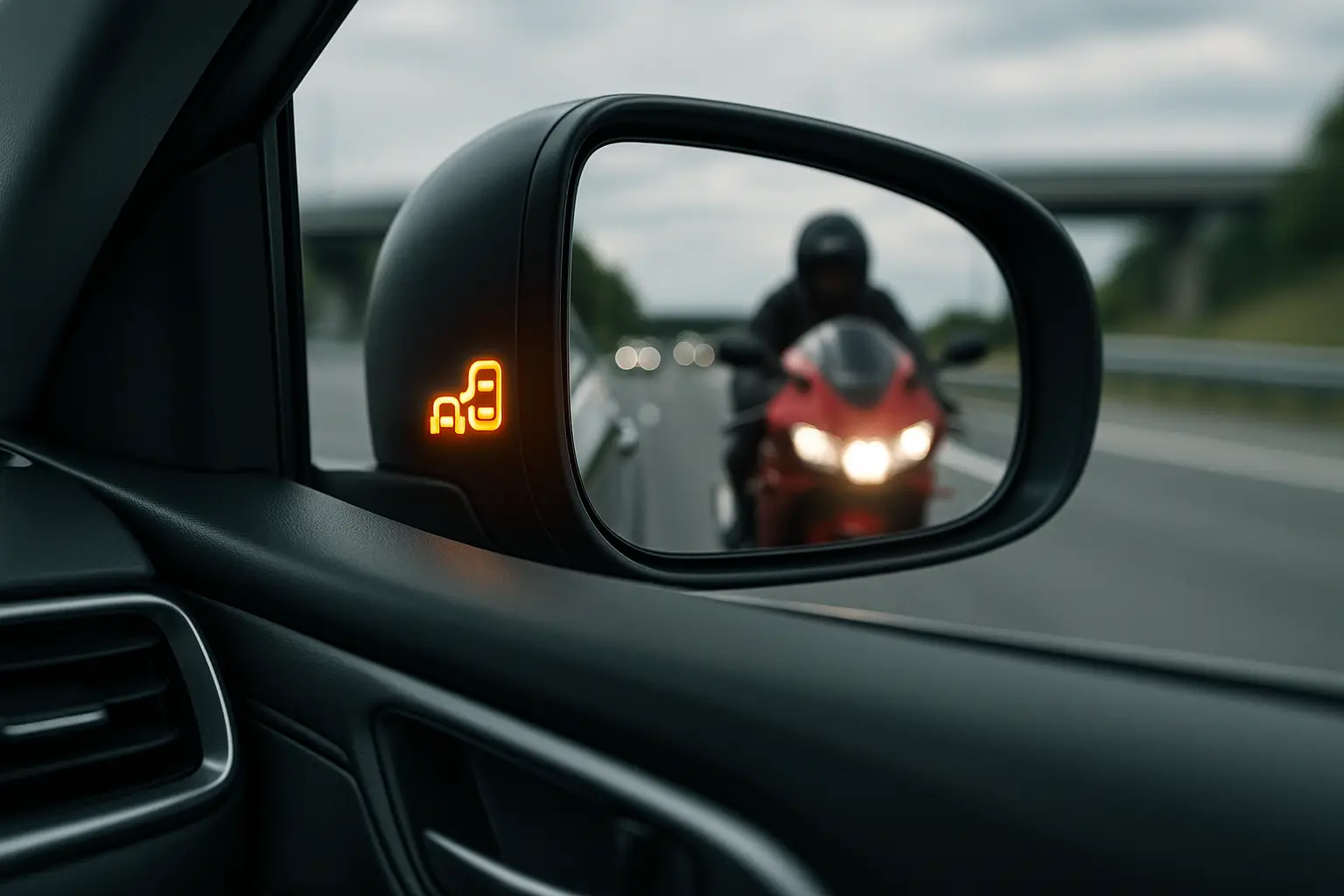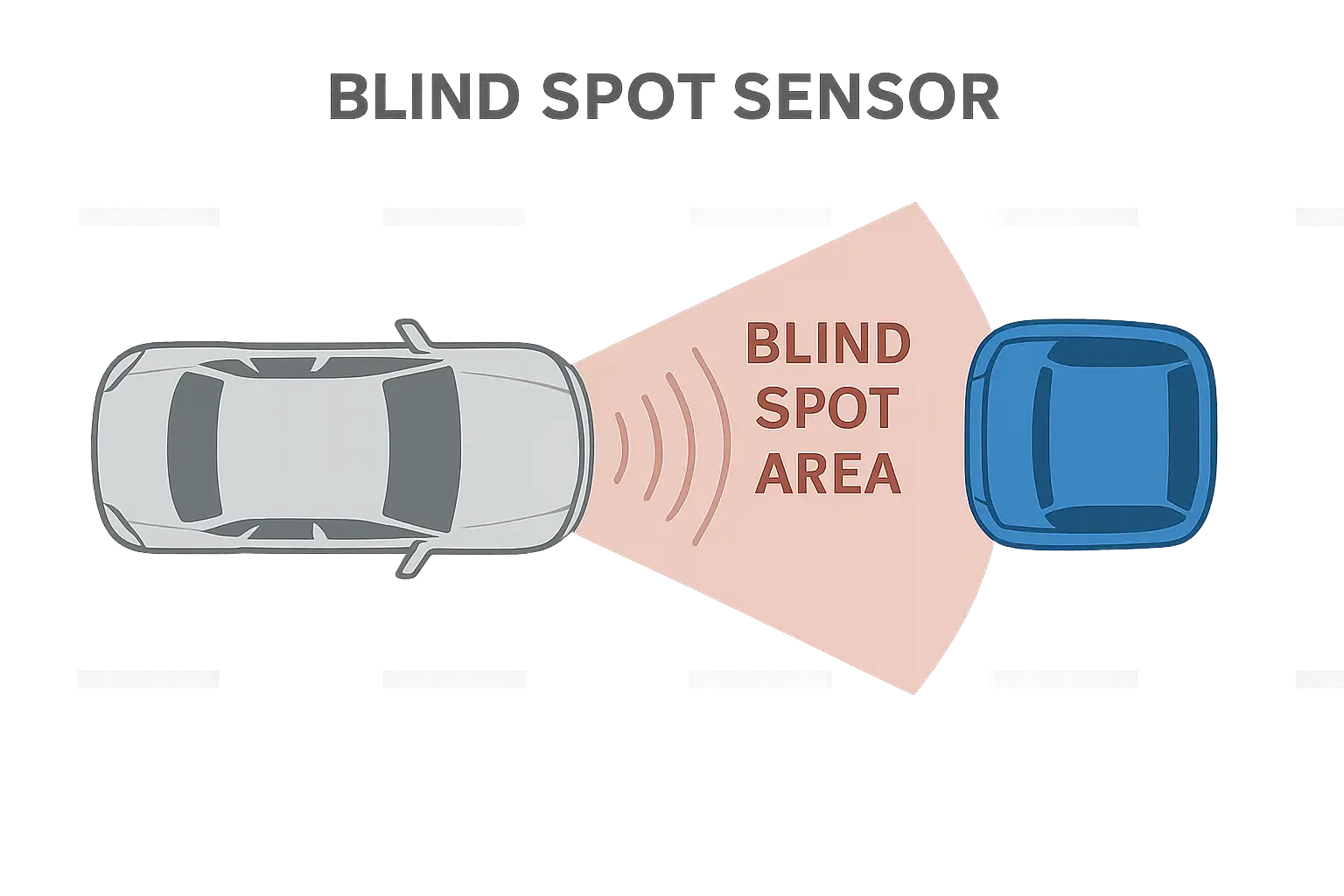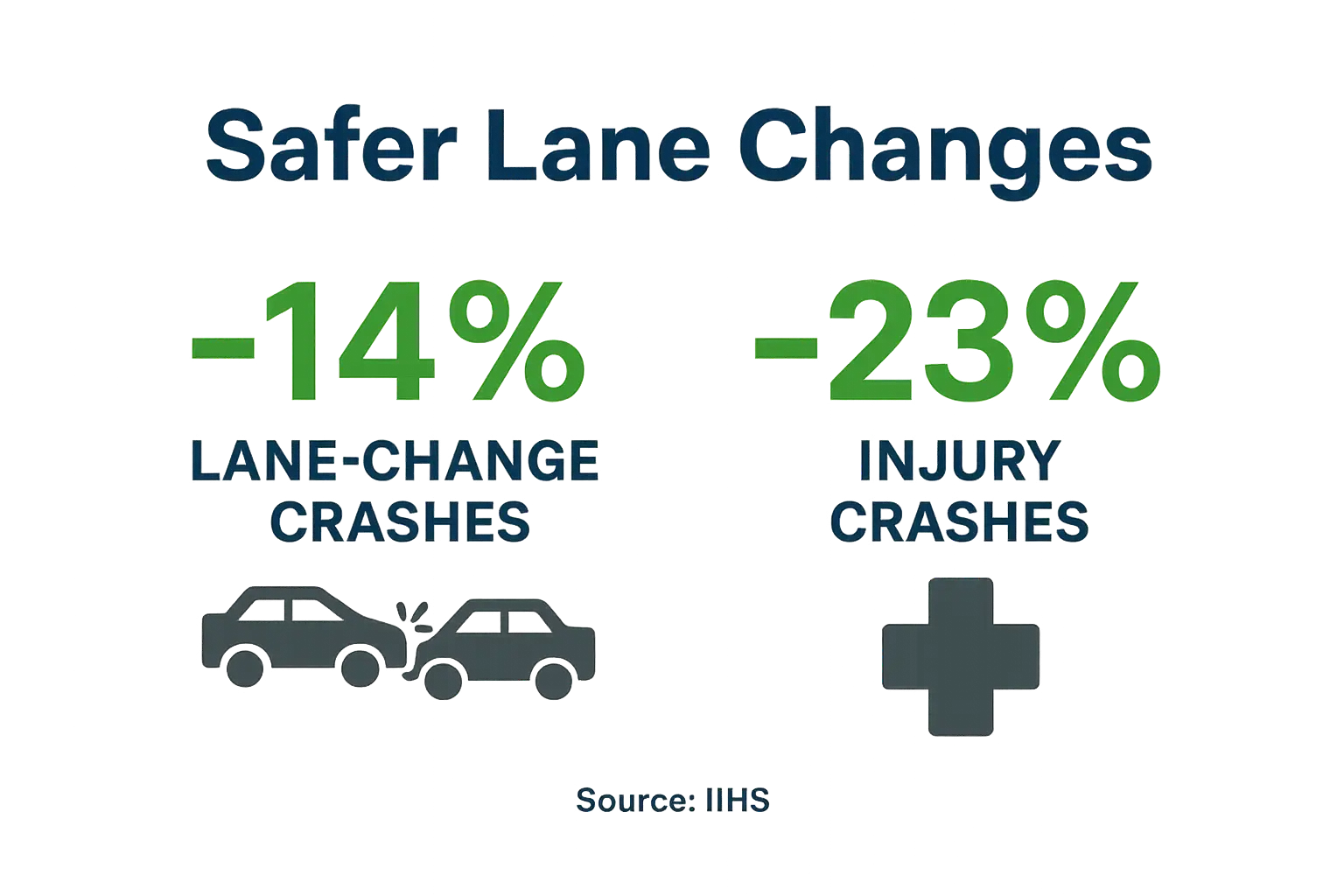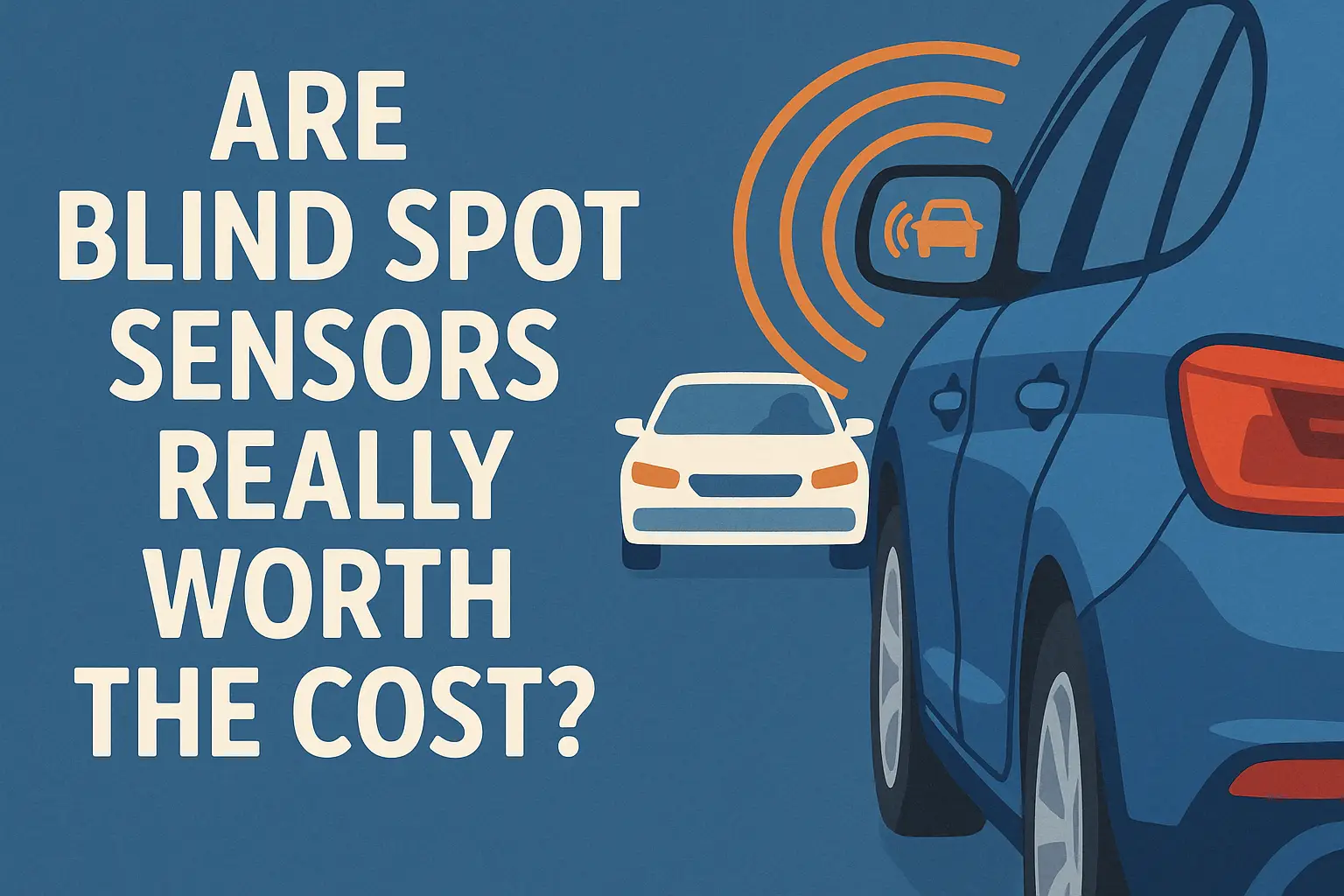Trying to change lanes but that nagging fear hits you. Is the coast really clear? A quick glance isn't always enough. This technology offers the peace of mind you need.
Yes, blind spot sensors1 are absolutely worth it. Data from top safety institutes shows they reduce lane-change crashes by 14% and related injuries by 23%. They act as a crucial digital co-pilot, alerting you to vehicles hidden from view and making every lane change safer.

I still remember the first time a blind spot sensor saved me from a potential accident. I was on a busy highway, signaled to merge, and checked my mirrors. Everything looked clear. But just as I started to move over, a small light on my mirror flashed and my car beeped. A fast-moving motorcycle had been perfectly hidden from my view. That single moment paid for the feature ten times over. It's not about replacing good driving habits; it's about having a backup for those moments when human error is possible. This technology provides an extra layer of awareness that can make all the difference, and once you've experienced that safety net, it's hard to imagine driving without it.
How Exactly Do Blind Spot Sensors Prevent Accidents?
That sudden jolt of surprise when a car "appears" right next to you is terrifying. What if you could know it was there before you even turned your head?
These systems use radar or ultrasonic sensors, typically in the rear bumper or side mirrors, to scan the areas you can't see. When a car enters your blind spot, a visual alert on your mirror or a sound warns you, preventing a dangerous lane change.

Let's dive deeper into the actual mechanics. It’s not just a simple on/off switch. The system's brain, the Electronic Control Unit (ECU)2, is constantly doing calculations. It doesn't just see an "object"; it measures the object's speed relative to yours. This is crucial. It helps the system ignore stationary things like guardrails or parked cars, reducing false alarms. Most systems only activate above a certain speed, like 20 mph, because blind spot dangers are most critical at higher speeds. Furthermore, the technology is evolving. We now see two main types of systems:
Passive vs. Active Systems
- Passive Systems: This is the most common type. It provides a warning—a light on the mirror, an audible beep, or both. The system alerts you to the danger, but the final action is entirely up to you.
- Active Systems: This is the next level of safety. If you signal to change lanes while a car is in your blind spot, an active system can intervene. It might apply gentle counter-steering to guide you back into your lane or selectively brake the wheels on one side to pull you away from danger. This active intervention can be the last line of defense when a driver's reaction isn't fast enough.
| System Feature | Passive System | Active System |
|---|---|---|
| Warning | Visual and/or Audible Alert | Visual and/or Audible Alert |
| Intervention | No | Yes (Steering or Brake Assist) |
| Typical Use | Most common and standard | Often part of advanced safety packages |
Understanding this distinction is key when you're looking at a new or used car's feature list.
What Do the Accident Statistics Actually Say?
You hear that these systems are safer, but is that just marketing talk? You want real numbers, not just anecdotes. The data provides the clear proof you need to make a decision.
The statistics are very clear and compelling. The Insurance Institute for Highway Safety (IIHS)3 found that blind spot monitoring systems reduce the rate of all lane-change crashes by 14% and the rate of lane-change crashes with injuries by an impressive 23%.

When I was shopping for my last car, these were the numbers that sealed the deal for me. The data from unbiased organizations like the IIHS is the gold standard. Let's really analyze what these numbers mean. The 23% reduction in injury crashes is the most important figure here. It tells us that these systems are not just preventing minor fender-benders. They are preventing the high-speed, direct-impact sideswipes that are much more likely to cause whiplash, side-impact injuries, or even cause a driver to lose control. The system is most effective at preventing the worst-case scenarios. A study from the University of Michigan's Transportation Research Institute backed this up, finding that these systems could prevent or lessen the severity of nearly 50,000 crashes per year in the U.S. alone. This isn't just a convenience feature; it's a public health tool that has a measurable impact on road safety across the population.
| Safety Organization | Key Finding | Implication |
|---|---|---|
| IIHS | 14% reduction in lane-change crashes | Proven overall effectiveness in daily driving. |
| IIHS | 23% reduction in injury crashes | Excels at preventing more severe, high-speed accidents. |
| NHTSA | Identifies BSM as a key recommended safety tech | Federal endorsement of the technology's value. |
These figures show a clear consensus: the technology works and saves people from harm.
Are There Downsides or Limitations I Should Know About?
No technology is perfect, and it's smart to be a little skeptical. What happens if it fails or gives false alerts? Knowing the system's limits is the key to using it correctly.
Yes, there are limitations. Heavy rain, snow, or mud can block the sensors and temporarily disable the system. It can also sometimes give false alerts for objects like guardrails or when you're in a sharp turn, which can be distracting if you're not used to it.

Understanding these limitations is about being an intelligent user of the technology, not a reason to dismiss it. Think of it like a pilot who knows their plane's capabilities and limits. The most critical limitation to understand is the "high-speed differential" problem. If a vehicle is approaching from behind you at a much higher rate of speed, some older or less sophisticated systems might not detect it until it's already in your blind spot. They are programmed to look for cars maintaining a similar speed in the next lane, not missiles coming up from two lanes over. This is why a shoulder check remains essential. Another practical consideration is cost, not just upfront but for repairs. The radar sensors are often housed in the rear bumper corners. A minor parking lot bump that used to be a simple cosmetic fix can now become a multi-thousand dollar repair if it damages the sensor and requires recalibration. This is a real-world cost of ownership to consider.
The Psychology of Over-Reliance
The biggest danger isn't technical; it's human. It's the risk of complacency.
- Habituation: After hundreds of successful, incident-free lane changes using the sensor, your brain starts to trust the light more than your own eyes. You may subconsciously stop doing a full shoulder check.
- Automation Bias: This is a documented psychological effect where people favor information from automated systems over their own judgment, even when their own senses tell them something is wrong.
You have to actively fight this complacency by always performing a physical head check as your primary action, using the sensor's light as a final confirmation.
Conclusion
When you weigh the evidence, blind spot sensors are a clear win for safety. The data from trusted institutes confirms they significantly cut down on accidents and injuries. While you must be aware of their limitations—like weather interference, repair costs, and the risk of over-relying on them—their role as a vigilant co-pilot is invaluable. Ultimately, they provide a crucial layer of security that supports, rather than replaces, a driver's good habits.


